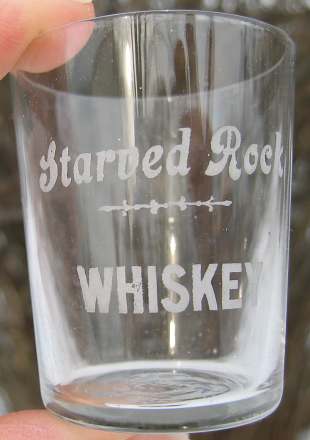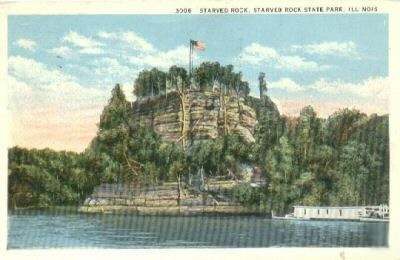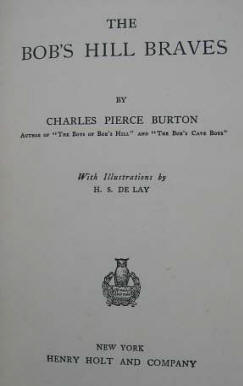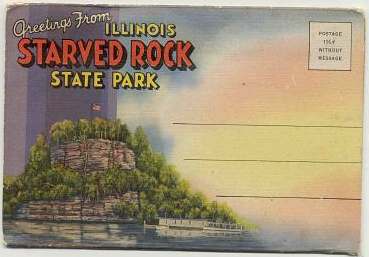 |
|
Starving
for Glass in Illinois |
|
|
In his September 26, 2005, “Shot
of the Week” column, Robin led off with a diatribe about the
“willingness of collectors to fork over serious cash for mundane
glasses.” He illustrated his comments with a photograph of a
“text only” shot glass advertising Starved Rock Whiskey. |
Admittedly, the eBay sales price for this glass
was somewhat steep. But is the Starved Rock Whiskey glass mundane?
Not hardly. Unfortunately, our beloved glassmaster is sometimes blinded
by the tawdry beauty of fancy etching and ornate pictures. Deluded by an
“all flash, no substance” collector’s philosophy, he sometimes forgets
that the story behind many text-only glasses makes them interesting in
their own right.
And the story behind this glass is more interesting than most. Starved
Rock is a 125-foot sandstone butte that is part of Starved Rock State
Park, near Utica, Illinois. The park is on the banks of the Illinois
River and is about ninety miles southwest of Chicago.

This area has been home to humans from as early as 8000 B.C. Hopewellian,
Woodland, and Mississippian Native American Indian cultures thrived
here. The most recent and probably the most numerous group of American
Indians to live in the area was the Illiniwek, who inhabited this part
of Illinois from the 1500s to the 1700s.
When the French claimed the region, they built Fort St. Louis atop
Starved Rock in the winter of 1682-83 because of its commanding
strategic position above the Illinois River. But the French, threatened
by war parties of Iroquois Indians, abandoned the fort in the early
1700s and retreated to what is now Peoria, Illinois, where they
established Fort Pimitoui. Fort St. Louis became a haven for traders and
trappers, but by 1720 all remains of the fort had disappeared.
Starved Rock State Park derives its name from a Native American legend.
In the 1760s, Pontiac, chief of the Ottawa Indian tribe, was slain by an
Illiniwek Indian while attending a tribal council in southern Illinois.
Supposedly, during one of the battles that subsequently occurred to
avenge his killing, a band of Illiniwek was attacked by some Potawatomi
Indians, who were allies of the Ottawa. The Illiniwek sought refuge atop
Starved Rock. The only access to the top of the rock was via a narrow
passage, and the Illiniwek closed this off with rocks as they climbed.
The Illiniwek were safe; no one could come up. But unfortunately, the
Illiniwek could not come down, either. As these Indians became thirsty,
they tried to lower buckets into the river, but the enemy below,
watching and waiting in canoes, cut the hide ropes. Thirsty and hungry,
one by one, the hapless Illiniwek warriors died, thus giving rise to the
name, “Starved Rock.”
The label, “Starved Rock Whiskey,” honors this legend. The whiskey was
allegedly produced in the nearby town of Peru, in an establishment along
the Illinois River, on Water Street.
Utica is quintessential small town America. Even many people in Illinois
had never heard of it until April of 2004, when the village was thrust
violently into the national spotlight after a tornado ripped through the
town, killing several people and causing widespread destruction. In this
photo you can see the damage to the area surrounding the “Starved Rock
Bait and Tackle” store.

|
But lovers of vintage boys’
books knew of Utica long before 2004. A generation before baby
boomers were reading the Hardy Boys, author Leo Edwards wrote of
the adventures of Jerry Todd and Poppy Ott, who lived in the
fictional town of Tutter. The Jerry Todd and Poppy Ott books are
still avidly sought by collectors, and all these collectors know
that “Tutter” is actually Utica. |
 |
 |
Another author of boys’
books was Charles Pierce Burton, who wrote a series of books in
the early 1900s called the “Bob’s Hill” books. Although Burton
achieved national fame for his stories, the books were never
published in large numbers, and as a result, most are rather
rare. In one of them, The Bob’s Hill Braves, he tells the story
of the Legend of Starved Rock. |
Okay, I admit it. Our glassmaster has a point.
Starved Rock Whiskey will never have the cachet of, shall we say,
Glen Rock, Pa.
Nonetheless, the legend of Starved Rock is a great story, and it
deserves to be memorialized in shot glass collecting lore.
Finally, here is the technical stuff.
This glass is a thin-walled shot with the usual white-etched “text only”
label. It is 2-3/8" tall, 1-15/16" across at the top, and 1-9/16"
across at the bottom.

|





